Holy Moly: Depictions Of The Catholic Church In Cinema
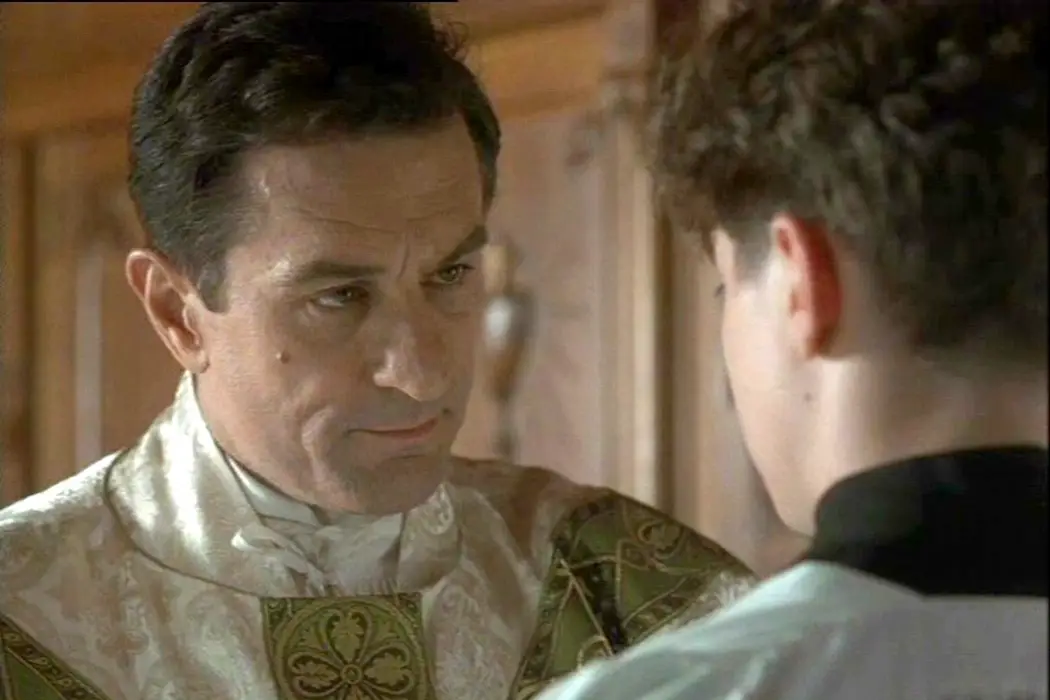
Michelle Sabato is an actor and writer from Cleveland, Ohio.…
More often than not I find myself starting conversations about things that people aren’t supposed to talk about. Things like politics, religion, being gluten free; topics that usually divide people or cause awkward pauses. But, being a Catholic is part of my culture and I have no shame with talking about it. I talk about what faith means to me, things about my religion that still confuse me, and the injustices within the Church. I would very much prefer having frank debates about touchy subjects than shying away from them completely.
The film industry and religion have a love/hate relationship. There are plenty of successful movies made with religious themes, but there are plenty made that also judge people of faith. Being religious isn’t discouraged in Hollywood, but most practicing religious folk tend to keep their beliefs from the forefront of their image.
The interesting thing to me about films that depict the Catholic Church is that they cross multiple genres. There are classic family-oriented films, dramas, historical biographies, and horror, to name a few. The Church is not just a religious institution, but it’s also a cultural backdrop that can be used as a main theme or can compliment a larger story.
I am just one Catholic who is also a writer, actor, and overall film lover. There have been times that I’ve seen depictions of Catholics in film and been slightly offended. But the offence wears off, and I realize that my faith should be stronger than a person’s criticisms of my Church. Here are some films that represent my Church, and here’s what I think they got right or wrong.
The Devils (1971)
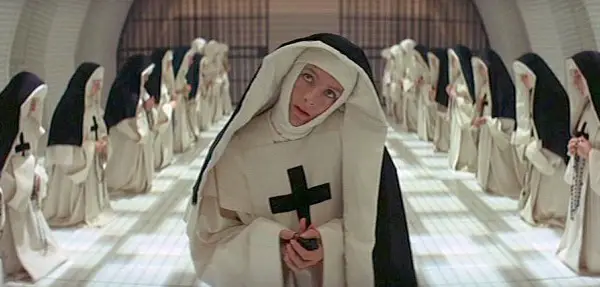
If you thought I was going to go soft on this list, you were wrong. I’m starting with one of the most controversial films in cinematic history, The Devils. Starring Vanessa Redgrave and Oliver Reed, The Devils is a dramatic account of a Catholic priest who is executed for supposed witchcraft. The priest, Urbain Grandier, rises to power in Loudon, France, where Sister Jeanne des Anges runs a convent. Sister Jeanne becomes obsessed with the priest and starts to exhibit strange, sexual behavior. Grandier is not keeping with his vows and marries, and when Sister Jeanne finds outs, she confesses to another priest that Grandier practices witchcraft and is possessing her.
Other sisters at the convent start to display strange behavior and a mass exorcism is done, which ultimately leads to an orgy of priests and nuns. Grandier is put on trial and murdered for his alleged crimes. After his death, which was a burning at the stake, Sister Jeanne is given one of his charred bones, which she uses for sexual purposes.
So, this film certainly has a lot going on, and as you can tell from the short synopsis, the Catholic Church was not accepting of it in the least. The film is based off of a book written by Aldous Huxley and is said to be based on actual events. Whether or not the story is genuinely a historical account, there are some truths that are presented in this film. The role of Urbain Grandier is a relatively accurate depiction of a higher-up in the Church at this time.
Many men in the Church who had higher positions of power essentially evaded a lot of rules. And that’s not to say that this was the common theme for all of them, but it was a consistent issue. Also, people within the Church would put a lot of faith in their local representatives, like Urbain. He would have been the closest thing to the Pope, or even Jesus for that matter, that people in this small town would have come in contact with. Much like today’s practices in a diocese, the Bishop is the overseer of that diocese; Urbain was the overseer of Loudon.
It’s clear to me as a Catholic why the Church would not approve of this film. Seeing nuns writhing around in sexual ecstasy because of a supposed demonic possession is not exactly on brand for Catholicism. That being said, the film does show the corruption of the Catholic Church at that specific time in history.
Sleepers (1996)
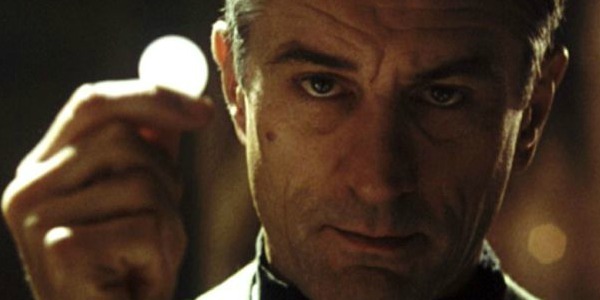
When I was fourteen years old there were three films that I would watch at least once a week, and Sleepers was one of them. I happen to believe that this is one of the most underrated films of the 1990s and really encourage anyone I know to see it.
The film takes place in the 1960s in Hell’s Kitchen, New York. A group of friends pull a prank that goes terribly wrong and are sent to the Wilkinson Detention Home for Boys, where they are raped and tortured by the prison guards. The story then jumps to modern day with the group of boys, now adults, all living separate lives. Two of the boys, John (Ron Eldard) and Tommy (Billy Crudup), are criminals who jump at the opportunity to seek revenge when they notice one of the guards from Wilkinson’s at a restaurant. Officer Nokes, played by Kevin Bacon, is murdered in the restaurant and John and Tommy go on trial. The other members of the group, Shakes (Jason Patric) and Michael (Brad Pitt), orchestrate to throw the trial and reveal the abuses at Wilkinson.
Thrown into the mix is the integral character of Father Bobby, played by Robert DeNiro. The four boys relied on Father Bobby growing up, as they all dealt with different degrees of family dysfunction. Father Bobby served as the stability in their lives, offering them a look at a world outside of the corruption in Hell’s Kitchen. None of the boys told Father Bobby what happened to them while at Wilkinson until the trial started. Shakes is recruited with asking Father Bobby to be an alibi to John and Tommy, and he is aware that he is asking a priest to lie under oath. Shakes then reveals to Father Bobby who Nokes was and the abuse that all the boys endured. Father Bobby agrees to be their alibi.
The Catholic Church and the representation of Father Bobby is one of the truest I have seen in film. No, not all parish priests are going to commit perjury for their congregants, but it speaks to the bond that members of the Church can have with the community. Being Catholic is oftentimes seen as an extension of one’s culture, and that is the case with Sleepers. The boys’ lives are shaped by the mentorship they receive from Father Bobby, and the Catholic Church is the pillar that serves as a backbone of stability.
Romero (1989)
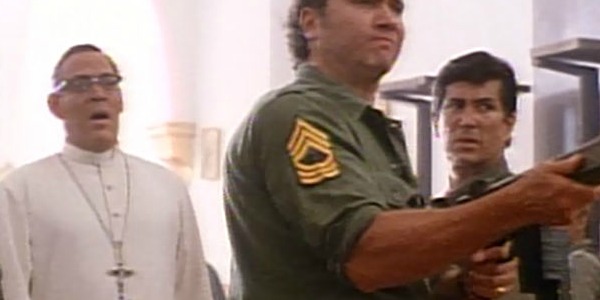
I was a Catholic school kid from grade school all the way through college. There are certain films that are in the canon of Catholic school curriculum, and Romero was one of them. Based on the life of Oscar Romero, an Archbishop from El Salvador, Romero covers the elections and uprisings in the late 1970s and early 1980s.
In El Salvador during the civil war, a guerrilla military begins death squads and torture of anyone who speaks out against human rights crimes of the administration. Father Oscar Romero initially wanted to stay out of politics altogether, but he becomes increasingly upset by all the corruption and murder he sees daily. After the assassination of his fellow priest friend, Father Grande, Father Romero publicly speaks out against the government. This leads the guerrilla militia to start targeting and murdering priests. Father Romero speaking the truth ultimately leads to his own assassination while he was saying Mass.
The film was the first feature length movie made by Paulist Pictures, a production company founded by a Catholic priest to create Catholic content. The film was released less than a decade after Father Romero’s assassination and when El Salvador was still trying to heal after their civil war, so it was fresh in the environment. It also was a way of showing the world at large the atrocities that were happening in El Salvador.
Social justice is a large component of the Catholic Church and it is accurately depicted in the film Romero. While the Church seems like a large money-taking institution, it’s also present and important in places of the world in total despair. Romero shows the audience how members of the Church can be agents of change in a terrifying world.
The Magdalene Sisters (2002)
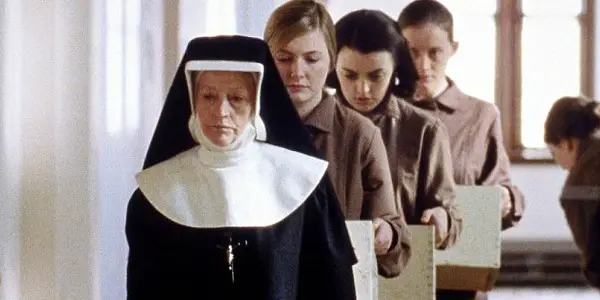
The first time I saw this film I sat in silence and was physically ill. It would be easy for me to avoid the sex scandal out of shame, but I choose not to do that. The film, The Magdalene Sisters, depicts real life accounts of the wrongdoings that took place at the Magdalene Asylums in Ireland. The asylum was a home for young girls who were considered “bad” by society.
While the Asylum is full of women, the film focuses on 4 women in particular: Margaret, Bernadette, Rose and Crispina. All of the women are forced to endure food deprivation, rigorous work loads, sexual assault and public humiliation. In one scene in particular, the women are summoned to line up and strip their clothes while the nuns compare their naked bodies. Crispina, in particular, is raped by one of the priests who comes to the asylum.
The asylum closed in 1996, and three of the four women depicted were able to leave and attempt to live normal lives. Crispina, however, lived out her days in a mental institution and died because of complications of anorexia. In regards to the sexual scandal, Ireland has the most accounts of misconduct compared to other countries. While The Magdalene Sisters is a film about just one asylum, there are stories and survivors who came from similar institutions around the country.
As a Catholic I can feel nothing but embarrassment, rage, and huge sorrow regarding the stories told in this film. Is this a depiction of my Church that I would prefer to watch? Certainly not. But the truth of the matter trumps my discomfort.
Depictions of the Catholic Church: Conclusion
The Catholic Church is a large, international organization. And any large group is complicated and not without fault, as the films that I chose accurately prove. There are many beautiful and just things that the Church has to offer, while it also has dark and sinister agents working within it.
I believe cinema owes its viewers a duty to show an accurate representation of society while also questioning it. The films chosen have certainly done that for me. And while none of these films have personally changed my faith, they have certainly have given me long moments of reflection.
If you are Catholic, is there a film that has strengthened or weakened your faith? If you are not Catholic, is there a film that left a lasting impression on your regarding the Church?
Does content like this matter to you?
Become a Member and support film journalism. Unlock access to all of Film Inquiry`s great articles. Join a community of like-minded readers who are passionate about cinema - get access to our private members Network, give back to independent filmmakers, and more.
Michelle Sabato is an actor and writer from Cleveland, Ohio. By the age of 2 Michelle had memorized all the words to The Wizard of Oz. So, yes, she can carry a conversation with just using movie quotes.













